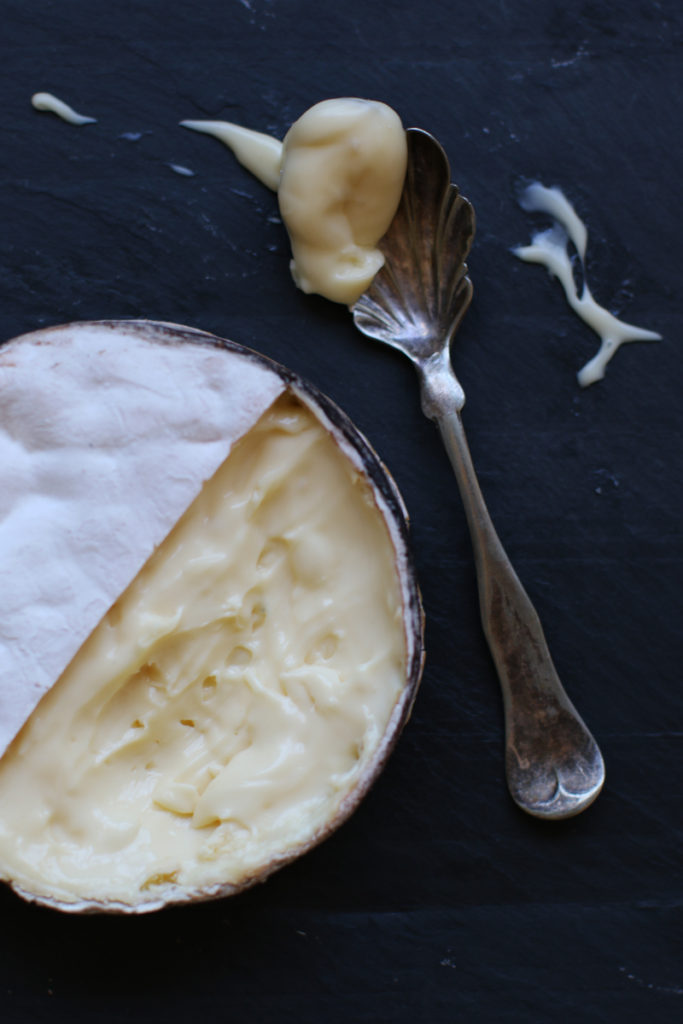As the snow starts falling up here in the Northeast, we’re reminded of our favorite things about this time of the year – decorating for the holidays, warm drinks by the fire, and of course, Winnimere.

We wouldn’t be cheese experts if we didn’t greet each new season with the greatest excitement for the seasonal cheeses that it brings. Each change in the season means a new cheese heading our whey, something unique and delicious in its own right. Winter brings us the oozing, wonderfully spoonable cheeses inspired by Swiss classics. Look at Rush Creek, Vacherin Mont d’Or, and our lovely little ‘Winni’. Inspired by Forsterkase, a washed rind, raw cow’s milk cheese that is wrapped in spruce, these cheeses are known for their pleasantly creamy texture, perfect for spreading onto warm bread or just digging into with little pretext.
In the past, Winnimere’s distinctly pink and white dappled rind came from a wash of all sorts of brews and concoctions. But nowadays, the good folks at Jasper Hill Farm have been developing a simple salt-water brine that highlights the indigenous microflora of their raw milk. It is simplicity at its finest – focusing on the delicate flavors of the raw milk and allowing it to develop into something pungent, meaty, and woodsy.
Imagine a bonfire in the woods of Vermont, in the middle of winter. Not smokey, but something woodsy lingers on the palate, spreading across the tongue with a hidden meatiness beneath. Named for the corner of Caspian Lake where the Kehler Brothers’ grandfather would go ice-fishing, it is a true taste of terroir, or taste of place. Add the fact that this cheese only appears during the winter months, and you’ll understand that you’re diving into a cheese that is truly special.
Here’s all you need to enjoy it – with a knife, peel away the top rind. If you’re enjoying with friends, take the whole top off and dig in with a spoon. You could portion it out, of course, by only slicing off a little bit of the top rind. But really, why would you? Dig in!

